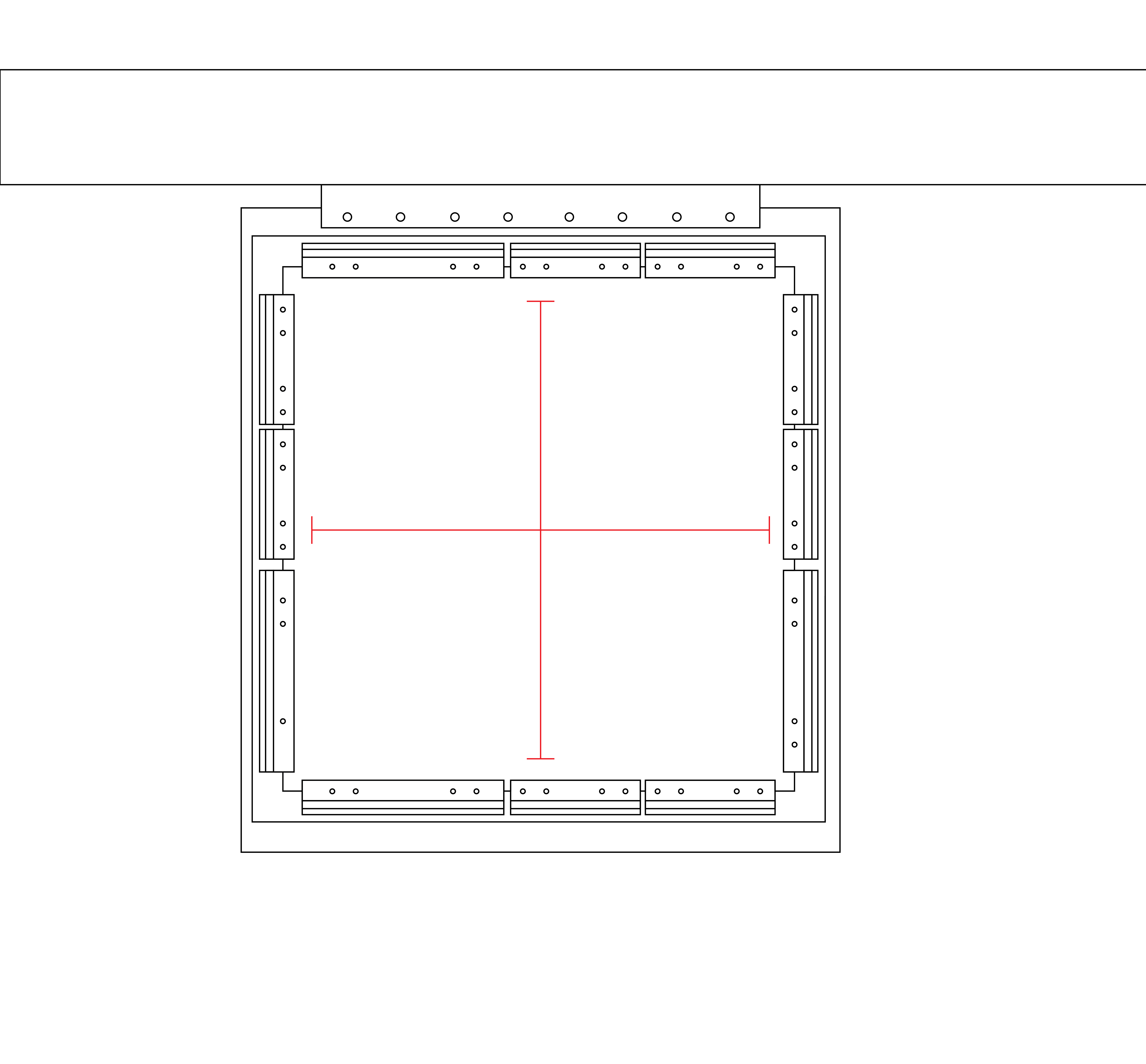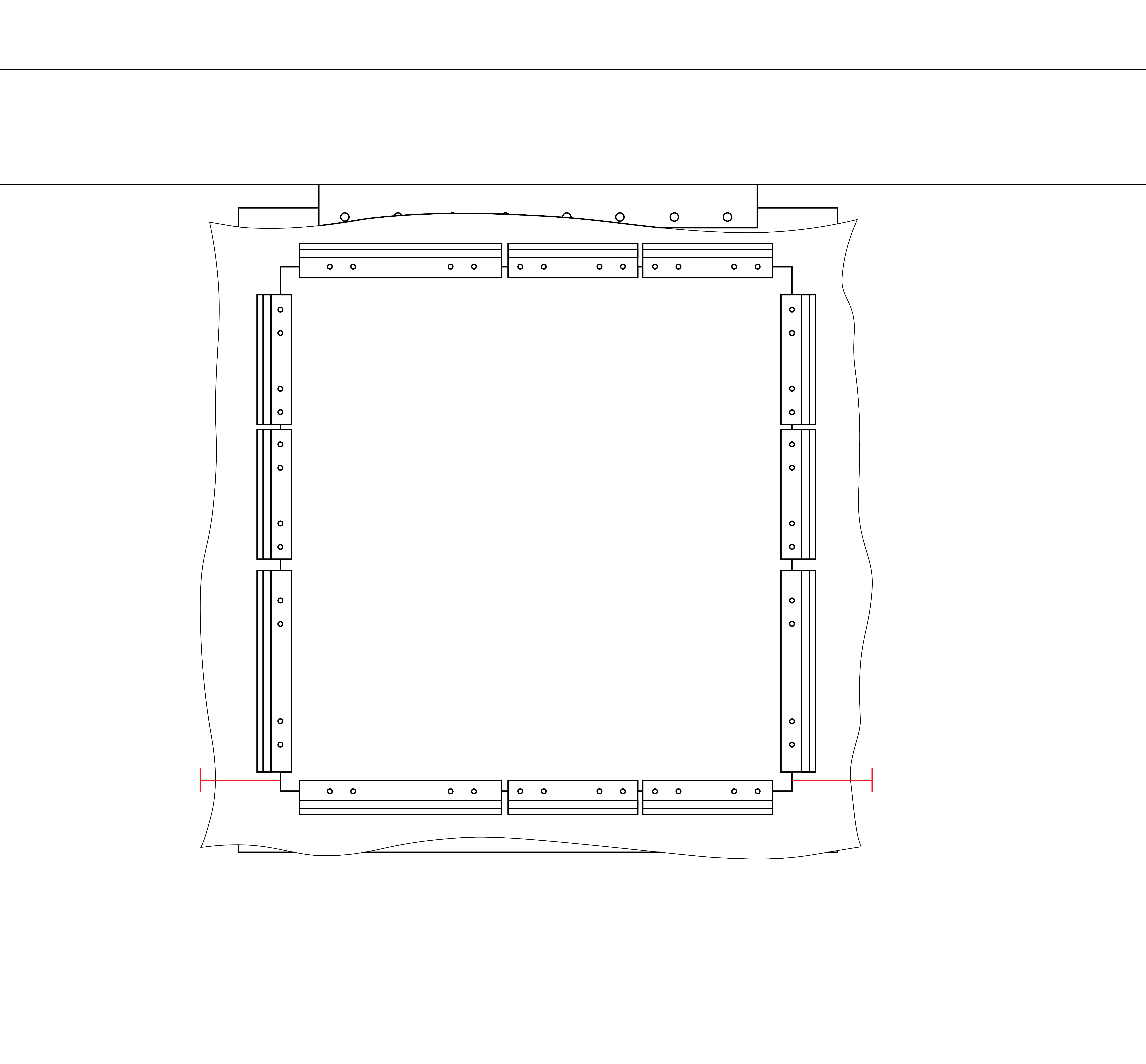Frame Selection
Section outline
-
Understanding Frames and Backing Materials in Technical EmbroideryThe frame is a vital part of the embroidery machine that is moved by the pantograph across the X and Y axes to create the design. It holds and tensions the backing material, allowing the embroidery head to stitch or place technical materials precisely onto the surface.
Frame Considerations for Technical EmbroideryChoosing the correct frame size is one of the most important decisions when selecting an embroidery machine for your application. Frames can range from just a few centimeters wide—for highly specialized uses like footwear embroidery—to over one meter by one meter for large technical panels.
However, it’s important to understand that some margin of the backing material will always be consumed by the clamping mechanism. The clamps secure the material in place but create a "non-embroiderable" border around the design area. The exact width of this unembroiderable edge depends on the clamp style and the embroidery technique being used.
- W-Head embroidery (Tailored Fiber Placement) typically requires a larger margin because of the way fibers are laid down and stitched.
- K-Head and F-Head embroidery can often proceed much closer to the clamp edge, maximizing usable design space.
Clamping Methods for Holding Backing MaterialsThe backing material can be mounted onto the frame using several types of clamps, each suited for different stages of development or production needs:
- Manual Clamps: Quick and flexible, manual clamps allow fast testing across a variety of materials—different thicknesses, textures, and friction levels. Clamping force and surface properties can often be customized depending on the specific technical requirements of the project.
Showing how the frame clamps over the fabric with manual clamps below.

- Pneumatic Clamps: Ideal for production environments, pneumatic clamps automate the clamping process, improving throughput and consistency. They apply adjustable, uniform tension across the fabric and are especially valuable in high-volume manufacturing settings. Less common for rapid prototyping due to their setup requirements.
- Magnetic Clamps: Magnetic clamping systems use high-friction surfaces and magnetic forces to secure the material. They enable fast material changes, making them highly efficient for applications requiring repeated setup and teardown while maintaining excellent tension control.
Showing the stitchable area in the frame below:
What is the Backing Material?The backing material is the fabric, film, mesh, or technical substrate that is loaded into the frame. It serves as the foundation into which the embroidery—whether thread, fiber, wire, or tubing—is stitched.
Depending on the strength, flexibility, and durability of the chosen backing, additional layers called stabilizers might be required. Stabilizers reinforce the backing from below, holding stitches securely and preventing issues such as puckering, tearing, or fiber pull-out during or after embroidery.
Common Examples of Backing Materials in Technical Embroidery- Standard thermoplastic woven and nonwoven fabrics
- Glass fiber and carbon fiber woven/nonwoven fabrics
- Plastic films (such as PET or TPU films)
- Tarping and outdoor performance materials
- Biomedical substrates (biocompatible or disposable materials)
- Natural materials like leather, silk, and organic textiles
- Metallic wire meshes for conductive or shielding applications
- Decorative laces with structural support
- Soft and semi-rigid foams for cushioning and flexible architecture
Visual ExamplesShowing the thickness of the frame. Thicker frames clamp the fabric better, however you'll lose embroidery area.


